Showing 801–810 of 1165 results
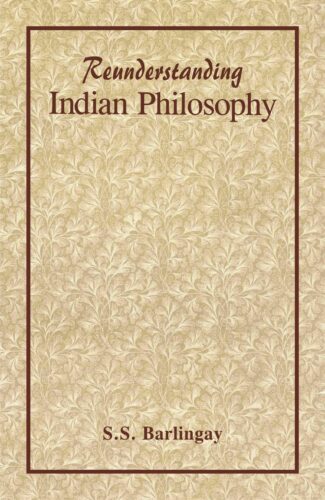
The book discusses the problems raised by the classical systems like Carvaka, Jain, Buddhism, Nyaya, Vaisesika, Samkhya, Yoga, Purva Mimamsa and Vedanta. It establishes epistemological, metaphysical and axiological significance of Indian philosophy, offering a unique insight.
What is Philosophy? Is it determined by any geographical boundaries? Does it emerge out of cultural patterns of the society? With such and other basic questions Prof. Barlingay analyses the concepts theories and trends in philosophy as they have developed in our sub-continent over the ages. Although this account of philosophy is called Indian he emphasises that the issues discussed by the ancient and medieval philosophers are essentially abstract and there is nothing Indian about this philosophy exclusively. Moreover, the understanding of Indian philosophy that has emerged in the past two centuries owes its direction and commitment to Indologist of Western orientation. Prof. Barlingays aim is to overview the Indian philosophy as presented by ancient and medieval philosophers and not the re-routed interpretation. Hence, he refers to it as a Re-Understanding. In this challenging endeavor Prof. Barlingay has discussed in-depth and critically the basic issues and problems raised by the orthodox and unorthodox systems like Carvaka, Jain, Buddhism, Nyaya, Vaishesika, Samkhya, Yoga, Purva Mimamsa and Vedanta. The book is replete with his logical reasoning. Within its anthropological context the author establishes a epistemological, metaphysical and axiological significance of the Indian philosophy offering the reader a unique insight in the subject.
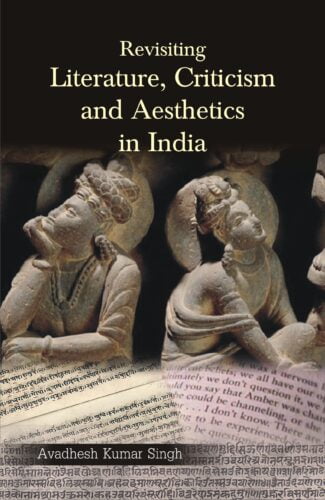
The book objectively revisits the widely discussed issues pertaining to colonialism, post-colonialism, literary criticism and aestheties in India and not only critiques their constructs but also comes up with alternative constructs in the backdrop of Indian realities as manifested in creative and critical terms.
The declining decades of the 20th century witnessed discussion of various issues pertaining to colonialism, postcolonialism, literary criticism and aesthetics in India. The present book in its four parts Word, World and Perception, Colonialism and After, Literature and Theorizing in India, and Criticism and India deals with them and ancillary issues; and in the process of revisiting them not only critiques their constructs but also proposes alternative constructs in the context of Indian realities and their manifestations in creative and critical terms.
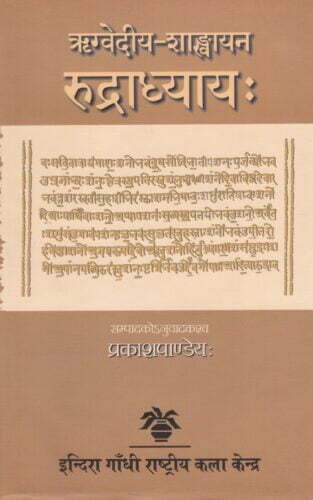
This book contains the rare Rudradhyaya of the Shankhayana Sakha of the Rigveda which has been preserved and recited by the Nagara brahamanas of Banswara district in southern Rajasthan. This edition gives an exposure to the most superior form and tradition of recitation, since till only Rudradhyaya of Shakala tradition was available in print now.
During Shiva worship, Nandi worship and other Shaiva rituals, the recitation of Rudradhyaya has been essential in both Shrauta and Smarta traditions. Any person reading and reciting traditionally a particular branch of the Vedas should also necessarily recite the particular Rudradhyaya as assigned to that particular branch.
Till today only Rudradhyaya related to the Shakala Samhita of the Rigveda was available. For the first time a Rudradhyaya from Rigveda of Shankhayana Shakha, which has been preserved and recited by the Nagara brahmanas of Baaswara district, in southern Rajasthan is being published.
This edition of Rudradhyaya is superior in many aspects than the ones available earlier as this gives an exposure to the most superior form and tradition of recitation.

This interesting compendium highlights the importance and stature of women Rishikas in the Vedic literature as epitomes of spiritual attainments, and emphasises that the gender discrimination as seen in the Hindu traditional thought was a later phenomenon. It provides a list of women Rishikas and mantras envisioned by them.
The volume presents a study of the famous women Rishikas mentioned in the Vedic literature.
The book describes the great respect offered to seers in the Vedic literature and the equal importance given to Rishikas when compared to Rishis. Discussing how even women of the Vedic period were epitomes of spiritual attainment, the book admiringly points out that the gender discrimination seen in the Hindu traditional thought was a later phenomenon (such as that women are not adhikaris for the study of the Vedas). It states that there are twenty-seven women mantra-drashtarah in the Rigveda. It provides a list of these women Rishikas and deals with the mantras envisioned by them. The Rishikas are mentioned in the study on the basis of those who praised the deities, those who conversed with the seers and deities, and those who praised the self. The Rishikas mentioned in the Yajurveda, Samaveda, and Atharvaveda are also mentioned. Rishikas whose individual contributions are taken up in detail include Vagambhrni, Surya-Savitri, Shraddha, Daksina, Aditi, Ratri, and Urvashi, among others.
The volume is bound to be a handy reference book for all those interested in Indology, particularly students and scholars of Vedic and gender studies.

It looks into specific cultural formation of Teyyam. It re-frames and interprets various myths of mother-goddesses and hero-deities by situating them in the historical conditions in which they originated and explores from a sociological perspective how the ritual functions as ideology.
Teyyam, the spectacular ritual dance widely performed in north Kerala, has its distinct forms of visual and verbal expression. However, what was once expressed through the distinctly indigenous forms of this religious other no longer remains the same, as the specificities of meaning and messages as encoded in the whole structure of its ritual performance were levelled out and superceded by the ideological laundering of caste Hinduism. RITUAL AS IDEOLOGY looks into the specific cultural formation of teyyam it re-frames and interprets various myths of the mother-goddesses and hero-deities by situating them in the historical conditions in which they originated. Based on a study of the myths at a micro-structural level, the book explores from a sociological perspective how the ritual functions as ideology, apart from its cultic or religious significance. The study also unfolds and explains the gender disparity between the archetypal Female Devourer and her Male Victims, the recurrent motifs in the myths related to various manifestations of the Terrible Mother in teyyam. The study thus acquires contemporary significance in the face of cultural authoritarianism that in its design of appropriation attributes the village pantheon of every little tradition to canonical Hinduism, a process that has been so rife in todays cultural politics.
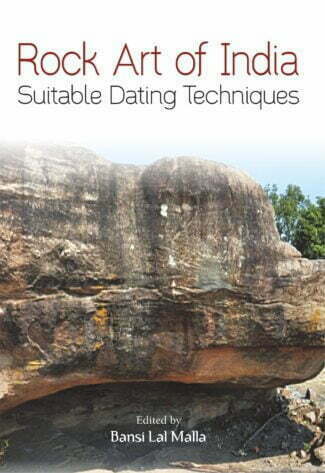
The present volume mainly emphasizes on a long due and much discussed and burning issues like that of what will be the Suitable Dating Techniques for Indian Rock Art. It includes not only new insights but also new dating results.
Rock art is a vital archaeological source to study and analyse the cognitive evolution of the human intellect across the world. The importance of rock art and its dating has long been a key issue of rock-art research and continues to be attended by difficulties about methodology, misinterpretation of findings and overconfidence in the reliability or precision of results. Most of the rock-art researchers primary focus in their investigations for rock-art dating at present has been to establish chronologies of different rock-art sites.
The present volume mainly emphasis on long due and much discussed issues like that of what will be the suitable dating techniques for Indian rock art. Some of the topics in the volume cover different dating methods such as the minimum dating by archaeological excavation, radiocarbon analyses of mineral accretions or their inclusions, radiocarbon analyses of paint residues or their inclusions, geomorphological methods, minimum or maximum ages derived from biological accretions, lichenometry, colorimetry of patinae, radiocarbon analyses of charcoal and beeswax figures, and any other methods of direct dating of rock art. This volume includes not only new insights but also new dating results. The data and interpretations put forward by various scholars are comprehensive and analytical. Most of their views are appropriate and hold promise in terms of recent trends in dating rock art.

This book covers a spectrum of topics related to culture and development that Dr Kapila Vatsyayan presented on different occasions and platforms. Economic development programmes should be inclusive of cultural and educational programmes, and should have a universal value.
This book covers a spectrum of topics related to culture and development that Dr Kapila Vatsyayan presented on different occasions and platforms. Culture has a wide meaning and varied interpretations. The term development is equally loaded and complex. Both the terms mean different to different persons. Development sans cultural values and ethos makes no sense. Therefore, interlinking of developmental programmes with cultural and educational programmes is imperative.
The volume thus discusses topics such as underlying concepts of the Indian cultural heritages; cultural configuration; profiling of cultural development; cultural tourism, its scope and impacts; new educational policy and the need to incorporate cultural goals in it; cultural osmosis between India and Indonesia; cultural patterns of India; what is culture from the Indian perspective; challenges in institutionalizing culture; cultural relations between India and Indo-China countries; and the contribution of Scheduled Castes and Scheduled Tribes for providing a unique identity to Indian culture.
It also deals with Mahatma Gandhis blueprint on development and the report of World Commission on Culture and Development; Lenins role in making culture available to the Soviet masses and speaks about an ecology of human resources; and contributions of the Orientalists and the present status of Oriental institutes, among some other topics.
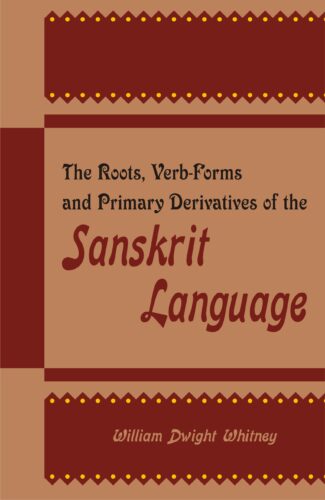
Exhaustive in nature and giving authentic information, this work is a thesaurus in its own kind, respecting the Sanskrit language of every age. It covers the periods in the life of the language, acknowledging and distinguishing it with different notations.
The book is intended especially as a supplement to Sanskrit Grammar of W.D. Whitney and includes all the views comprehensively of a given root in the Sanskrit language. The author has respected the language of every period, and the great St. Petersburg Lexicon of Böhtlingk and Roth have been his greatest source for materials on epic and classical literature. In the older language of Vedas and Brahmanas and Upanishads and Sutras, he has done much more independent work. The periods in the life of the language which are acknowledged and distin- guished by appropriate notation are six: the Veda (v.); the Brahmana (b.); the Upanishads (u.); the Sutras (s.); the epics (e.); and the common Sanskrit (c.). They have all been adequately explained in detail. The book will be useful to the scholarly community in need of authentic information on Sanskrit language.

The book studies the outstanding features of 31 famous palaces, pavilions and residences of the ruling class in different parts of Medieval India, from the thirteenth to the eighteenth century. It illustrates and discusses the layout plan of each building in detail.
The book brings out the outstanding features of the palaces, pavilions and residences of the ruling class in medieval India from the 13th to the 18th century. The focus is on structures that represent a group on religious and ethnic lines, i.e. Hindu/Islamic rulers, Indo-European Hindu or Dravidian Hindu or Afghani or Turk or Iranian rulers, and structures characteristic of particular periods and locales. Presenting some 31 famous buildings including the City Palace of Udaipur and Jaipur and the Lal Qila, Delhi and pleasure pavilions like the Hauz Khas, Delhi and Farah Bagh, Ahmadnagar, the work studies palaces and pavilions from the different regions of India. It illustrates the layout plan of each building in detail. Dr. Fredrick W. Bunce discusses the size, elaborateness or luxury of the royal structures which underlined the kings right to rule. With elaborate notes, he showcases their characteristics such as their tendency towards axiality and their symmetrical aspect, the Hindu rulers choice of the immutable square for the plan and their reliance on the shilpa-shastras, the east-west alignment of the structures, the labyrinthine character of residences/palaces, and their iconography that is unique to the Indian subcontinent. The volume has appendices that give the plans of other great structures of India and the world, list the major rulers of kingdoms in Indias different regions and provide a chronological list of major Indian monuments. The book will be extremely useful to students and scholars of Indian cultural history, particularly relating to architecture and iconography.
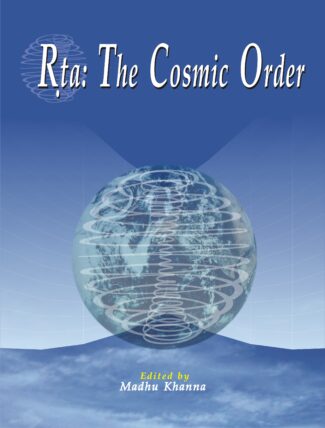
The articles trace the genesis of the concept of dharma in the Rgvedic concept of cosmic order or rta and relate other aspects of socio-cultural-religious life to the construction of order and its underlying vision. Comparing notions of order in Hindu, Buddhist, Chinese and Islamic speculative thought, they explain the relevance of understanding the concept of rta in the present day.
In the Rig Veda there is a remarkable insight on the notion of Rita or Cosmic Order, the inflexible law of universal order and harmony whereby all disorders and chaos is restored to equilibrium. Rita is, in essence, the ordering principle of nature which gives to everything from the vast galaxies, down to the nucleus of an atom, their nature and course. In the Vedic vision, this law of cosmic order is conceived to be manifesting at three levels: on the cosmic plane Rita governs the course of nature; on the socio-ethical level, Rita imparts justice; and on the religio-spiritual level, Rita mirrored the ritual performances of the sacrificial ritual (yajna). Rita contributes to the maintenance of balance between the micro and macro levels of existence. The articles, presentations at a seminar, trace the genesis of the concept of dharma in rita and relate other aspects of socio-cultural-religious life like food and eating customs, cultural communication and religious narratives to the construction of order and its underlying vision. They importantly examine the elements and relationships that create the cognition of order in temporal and spatial expressions of the arts. In this book, a panel of distinguished Indian and foreign scholars interpret this multifaceted theme of Rita from a wide range of perspectives. Comparing notions of order in Hindu, Buddhist, Chinese and Islamic speculative thought and with references to ancient Indian Hindu writings and modern science. Combining sound scholarship with a penetrating insight, these essays are a fine example of integrated studies. They give alternative viewpoints on the unity underlying this ancient concept as well as, its relevance in the modern age.
| There are no products |